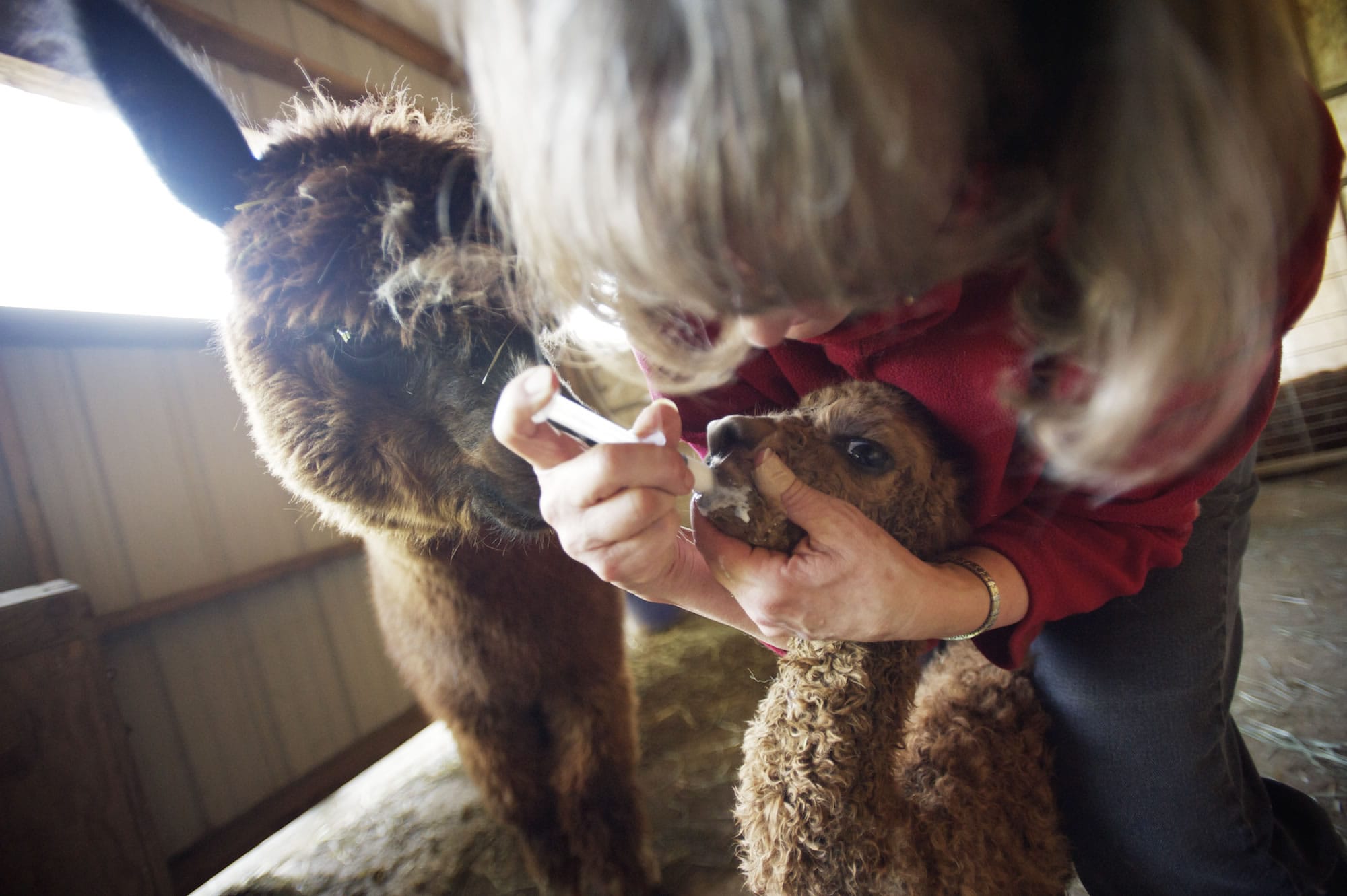You could consider Daryl and Ruthie Gohl to be Clark County alpaca ambassadors.
The couple, who own Columbia Mist Alpacas in Woodland, have been raising the peculiar creatures for 15 years — and they even sometimes give them to folks looking for unusual pets, Daryl Gohl said.
“We’re breeders of show alpacas, and the ones that aren’t show quality, a lot of times we’ll sell them or give them away,” he said. “We find oftentimes people will come back and decide they want to breed them.”
If you’re looking for one you’re in luck. The couple have six alpacas that they’d love to provide to a welcoming home.
Alpacas, with their long necks and shaggy hair, look like something you might get if you bred a poodle with a giraffe. The animals are prized for their hair, which is softer and warmer than sheep’s wool and doesn’t contain lanolin, the root cause of many wool allergies.
The Gohls have raised about 150 alpacas since they started their ranch in 1998. Their business is mostly breeding and selling them, although they also collect and sell alpaca fiber and related products.
The show quality part of the business is doing great, with many selling for between $8,000 and $10,000 or more, Gohl said.
Usually pet non-show quality alpacas sell for $200 to $500, but the economy has been too slow recently for them to sell, he said.
As pets, they can be sort of like big cats. They’re playful, have a variety of personalities and are relatively easy to care for.
Because alpacas are herd animals, owners need to have at least two of them, though, Gohl said.
“You can have six to 10 alpacas on an acre,” Gohl said. “All you need is a good perimeter fence. They can eat grass and a little grain with nutrients each day. They eat about a bale of hay a month.”
They’re also great for keeping the lawn trimmed, although they can only eat endophyte-free grass. Endorphyte grass can make them sick, Gohl said.
Beyond food, the animals need something simple like a shed, 10 feet by 10 feet, for shelter and a bucket of water to drink, and that’s about it, he said.
“They’re great pets,” he said. “Whenever somebody gets animals from us we help teach them how to take care of them. It’s always neat to see them get into good homes. Everybody, especially children, just love them.”
Interested? Check out columbiamistalpacas.com/ or call 360-225-1763 for details.
Bits ‘n’ Pieces appears Fridays and Saturdays. If you have a story you’d like to share, email bits@columbian.com.



